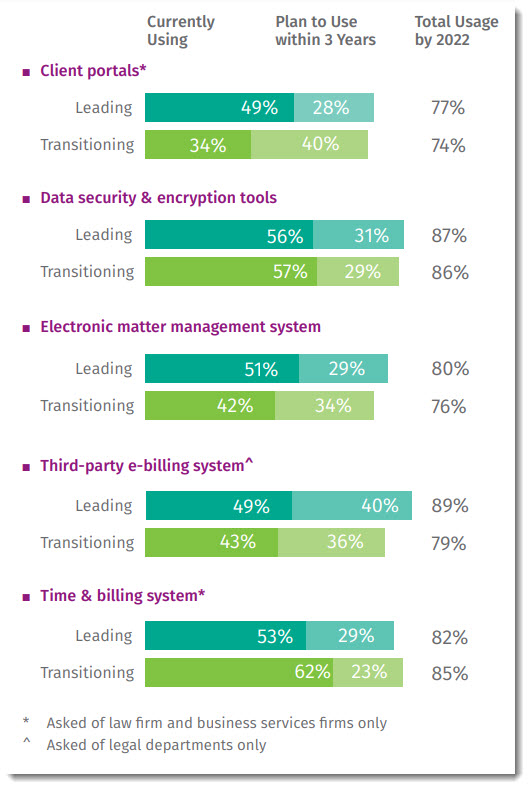The latest research for web designers, February 2020 — from webdesignerdepot.com by Suzanne Scacca
The future of law and computational technologies: Two sides of the same coin — from law.mit.edu by Daniel Linna
Law and computation are often thought of as being two distinct fields. Increasingly, that is not the case. Dan Linna explores the ways a computational approach could help address some of the biggest challenges facing the legal industry.
Excerpt:
The rapid advancement of artificial intelligence (“AI”) introduces opportunities to improve legal processes and facilitate social progress. At the same time, AI presents an original set of inherent risks and potential harms. From a Law and Computational Technologies perspective, these circumstances can be broadly separated into two categories. First, we can consider the ethics, regulations, and laws that apply to technology. Second, we can consider the use of technology to improve the delivery of legal services, justice systems, and the law itself. Each category presents an unprecedented opportunity to use significant technological advancements to preserve and expand the rule of law.
For basic legal needs, access to legal services might come in the form of smartphones or other devices that are capable of providing users with an inventory of their legal rights and obligations, as well as providing insights and solutions to common legal problems. Better yet, AI and pattern matching technologies can help catalyze the development of proactive approaches to identify potential legal problems and prevent them from arising, or at least mitigate their risk.
…We risk squandering abundant opportunities to improve society with computational technologies if we fail to proactively create frameworks to embed ethics, regulation, and law into our processes by design and default.
…
To move forward, technologists and lawyers must radically expand current notions of interdisciplinary collaboration. Lawyers must learn about technology, and technologists must learn about the law.
What to expect at IFA 2019, Europe’s colossal tech show — from digitaltrends.com by Josh Levenson
Excerpt:
This week, the world’s leading manufacturers will take to the stage at IFA 2019 in Berlin, Germany, to showcase their latest innovations. Here’s what you need to know about this year’s show, including when it’s set to start, how long it will run for, where it’s held, the schedule, and all the devices we’re expecting to see unveiled by the likes of LG, Sony, Samsung, and more.
Wi-Fi at 20: The internet’s most important tech is about to grow up — from androidauthority.com by Eric Zeman
Excerpt:
The organization is anticipating the launch of Wi-Fi 6 later this year. The next-gen version, technically called 802.11ax, promises a 30 percent jump in speeds, better security, and better performance when lots of devices are connecting to the same network.
Amy Peck (EndeavorVR) on enterprises’ slow adoption of AR and the promise in education — from thearshow.com by Jason McDowall
Description:
In this conversation, Amy and [Jason McDowall] discuss the viability of the location-based VR market and the potential for AR & VR in childhood education.
We get into the current opportunities and challenges in bringing spatial computing to the enterprise. One of these challenges is the difficulty in explaining a technology that needs to be directly experienced, so much so that Amy now insists C-level executives put on a headset as a first step in the consulting process.
We also talk about VR & AR in healthcare, and the potential impact of blockchain technology.
Fast forward to 29:15 or so for the piece
of this podcast that relates to education.
Also see:
Reality Check: The marvel of computer vision technology in today’s camera-based AR systems — from arvrjourney.com by Alex Chuang
How does mobile AR work today and how will it work tomorrow
Excerpt:
AR experiences can seem magical but what exactly is happening behind the curtain? To answer this, we must look at the three basic foundations of a camera-based AR system like our smartphone.
- How do computers know where it is in the world? (Localization + Mapping)
- How do computers understand what the world looks like? (Geometry)
- How do computers understand the world as we do? (Semantics)
Virtual reality helping those with developmental disabilities — from kivitv.com by Matt Sizemore
How VR is making autistic individuals more independent
Excerpts:
EAGLE, IDAHO — If you think modern day virtual reality is just for gaming, think again. New technology is helping those with developmental disabilities do more than ever before, and much of that can be found right in their own backyard.
…
“I see unlimited potential inside of their minds. I see us being able to unlock a certain person who can achieve things that we never thought could be done, and all of this could happen off of just exposing them to virtual reality,” said Smythe.
VR1 and the Autism XR Institute are constantly creating tools and ideas to help kids and adults with autism live a more independent life through virtual reality.
Also see:
Making a final wish comes true: Hospice expanding virtual reality therapy — from galioninquirer.com by Russell Kent
Excerpt:
ASHLAND — Hospice of North Central Ohio is extending its virtual reality therapy (VRT) in an effort to help Richland County hospice and palliative patients fulfill their last wishes, thanks to a $7,000 grant from the Robert and Esther Black Family Foundation Fund of The Richland County Foundation.
VRT uses video technology to generate realistic 360-degree, photographic or animated three-dimensional images, accompanied by sounds from the actual environment. When donning the headset and headphones, viewers are surrounded by visuals and sounds that give the impression of being physically present in the environment. Virtual reality therapy treatment allows patients to relive memories, return to places of emotional significance, or experience something or somewhere that they desire.
















